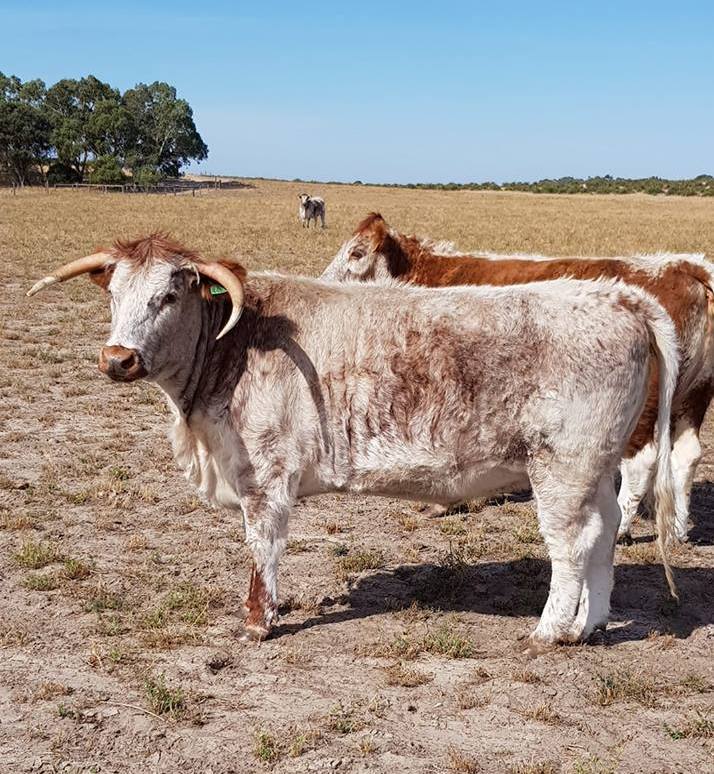
RARE BREEDS TRUST OF AUSTRALIA
powered by TidyHQCattle : English Longhorn
Cattle : English Longhorn
Country of Origin
England
Australian Status

Uses
 Beef
Beef
Breed Traits
Long horns that sweep outward, and sometimes downward, the tips coming forward. Red roan on white with speckles and patches; sometimes with grey and black. Most are more solidly coloured with the ancient cattle camouflage pattern, best seen in the Hereford, of a white outer frame breaking up the beast's outline; some have brindle markings on the red. The belly and backline are invariably white with this old pattern.
Sought after beef, a Longhorn cross winning the 'world's best grass fed steak award' in England in 2017, their rarity too has made them top priced here, steaks selling for over $300. There is good marbling on the grass fed meat. The meat has a fine texture, making it delightful to eat, and was a favourite of Charles II who famously pulled out his sword at dinner and dubbed his Longhorn loin roast "Sir Loin" - hence the cut named sirloin today.
A breed that thrives on grass and turns off well, not needing supplementary feed. Good natured, solid beasts; classically handsome with their rugged horns and thick, often crinkled, winter coats. Once a dual purpose animal used for milking too, they have a good milk supply rich in butterfat so calves grow fast. Once, the milk was valued for butter and cheese. The milk consistently won prizes at big shows in England for its butterfat, the cream being far richer than that of the famous Jersey and Guernsey cows.
Horns once had a use for all sorts of articles from drinking flasks to buttons and famously as cutlery handles. Once of course, in wild days of yore, they were needed for the animal's defence and for sparring with rivals. Their charm is undeniable and the link of horns to other genetic traits that are desirable may yet be proved. It is a valuable asset having rare breeds to preserve such traits.
History
An old English breed once the most popular in England, it was almost lost in the twentieth century, down to 50 animals. Of ancient bloodlines, at times used for draught purposes as well as for milking and beef, it was improved and the breed as we know it established by Robert Bakewell of Leicestershire in the eighteenth century. Bakewell also improved the long wool sheep and mighty Shire Horse, his breeding methods being modelled for generations after - his watchword being "breed the best to the best, regardless of affinity."
In the modern era, a wonderful resurgence of popularity has seen the breed return to safe numbers and even overtake the Shorthorn in Britain by numbers.
History in Australia
There is currently only one stud of pure animals, Willock Stud, at Meningie in South Australia, run by Richard Gunner - it began in 2013 with embryo transplants. A careful breeding program has seen the pure herd grow, and a good big herd of several hundred crossbreds also coming along. The cattle are currently for sale (August 2018). Another stud is in Western Australia run by Donald Cochrane, using imported semen, over mostly Shorthorns, starting in 2003 at Glencraig Suffolk Stud, these are grading up by being bred back to Longhorns and the stud is now standing bulls. Some animals are being graded up in NSW. Agri-Gene of Victoria import semen from England.
Breed Organisation
English Longhorn Australia Inc.
Australian Population
2022: approx. 30
Photo Credits
Longhorn cows in Australia, kindly supplied by Richard Gunner.
Page by Janet Lane
